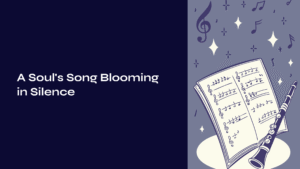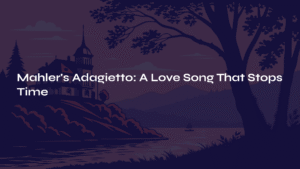Table of Contents

The First Time I Heard ‘Simple Gifts’
I still remember sitting in that dimly lit concert hall, the gentle rustling of programs slowly fading as the conductor raised his baton. The orchestra paused, a moment of collective breath, and then—a single clarinet emerged with a melody so pure and unadorned it seemed to float through the air like morning mist over rolling hills. That first encounter with Copland’s treatment of “Simple Gifts” in the Doppio Movimento section of Appalachian Spring left an indelible mark on my musical consciousness. There was something quintessentially American about it—open, honest, and filled with possibility.
What I didn’t realize then was how this seemingly simple melody would reveal new layers of meaning with each subsequent listening. The way Copland transforms this Shaker tune into a powerful statement of communal celebration speaks to something deep in the American experience—a dialogue between individualism and community, tradition and innovation, simplicity and complexity.

The Birth of an American Classic
Aaron Copland and Martha Graham’s collaborative masterpiece emerged during a pivotal moment in American cultural history. Composed during the final years of World War II and premiering on October 30, 1944, “Appalachian Spring” represented a conscious effort to create art that spoke to American identity separate from European traditions.
The ballet was commissioned by the influential music patron Elizabeth Sprague Coolidge, and its premiere at the Coolidge Auditorium in Washington, D.C. was met with such enthusiasm that an additional performance had to be scheduled for the following evening. The timing of its subsequent New York premiere—shortly after Victory in Europe Day—resonated powerfully with audiences seeking expressions of American optimism and resilience.
Copland originally scored the ballet for a thirteen-piece chamber ensemble, working within the spatial constraints of the venue. However, the piece’s immense popularity led him to arrange it as an orchestral suite in 1945, the form in which most audiences encounter it today. The work’s significance was immediately recognized, earning Copland the Pulitzer Prize for Music that same year.
What many don’t realize is that the ballet’s development wasn’t straightforward. Graham and Copland wrestled with how to create something authentically American without falling into clichés. They considered and rejected several scenarios before settling on the frontier wedding story, with Graham writing to Copland: “It is hard to do American things without becoming pure folk or a little like a mural in a middle western railway station or post office.”

The Heart of Spring: Understanding Doppio Movimento
The Doppio Movimento section represents the emotional and musical climax of “Appalachian Spring.” The Italian term “doppio movimento” translates to “double movement” or “twice as fast,” instructing performers to play at double the previous tempo—approximately 78 BPM or 156 BPM when interpreted in double-time.
This seventh movement of the orchestral suite contains the work’s most recognizable segment: the theme and variations on the Shaker hymn “Simple Gifts.” Written in C♯/D♭ major and lasting just over three minutes in standard performances, this section unfolds as a musical narrative that mirrors the larger themes of the ballet.
The theme is first introduced with disarming simplicity by a solo clarinet, creating an intimate, almost confessional atmosphere. What follows is a masterclass in variation technique as Copland gradually transforms this melody through five distinct variations:
- The Initial Statement – The clarinet presents the melody in its purest form, establishing the musical foundation.
- First Transformation – The melody expands into a duet, creating a dialogue that suggests the partnership of the ballet’s central couple.
- Rhythmic Development – The third variation introduces more complex rhythmic elements, building energy and momentum.
- Harmonic Expansion – Here, Copland employs inventive harmonization techniques, including static I-IV progressions and harmonically ambiguous two-voice textures.
- Culmination – The final variation builds to a radiant climax, with the full orchestra expressing communal celebration before transitioning to the reflective conclusion.
Copland’s handling of tonality throughout this section is particularly fascinating. He maintains a tonal center while avoiding predictable progressions, creating music that sounds simultaneously familiar and fresh. His use of open harmonies and widely spaced chords creates a sonic landscape that many listeners associate with the American frontier—expansive, optimistic, and filled with possibility.

When American Music Found Its Voice
My relationship with this piece has evolved over the years. What initially struck me as beautiful simplicity gradually revealed itself as profound musical architecture. I’ve come to appreciate how Copland balances accessibility with sophistication, creating music that speaks to both casual listeners and musical scholars.
The emotional impact of the Doppio Movimento section feels almost paradoxical—there’s both joy and melancholy, celebration and reflection. Perhaps this emotional complexity explains why the music continues to resonate across generations and contexts. When I hear those variations unfold, I’m reminded of the American capacity for continual renewal and reinvention, qualities embedded in both our national character and our artistic expressions.
I’ve listened to countless interpretations of this work, from Leonard Bernstein’s expansive reading to Michael Tilson Thomas’s more intimate approach. Each conductor seems to find different emotional colors within the score, yet the essential character—that uniquely American voice Copland discovered—always shines through.

Listening Beyond the Melody
If you’re approaching this music for the first time, or seeking to deepen your appreciation, here are some suggestions for a more rewarding listening experience:
Follow the transformation. Pay attention to how the simple Shaker melody evolves through its variations. Notice how Copland maintains the essence of the tune while continuously reimagining its context.
Listen for the spaces. Unlike much European music of the same period, Copland’s writing often emphasizes space and silence. These musical “breaths” contribute to the work’s distinctly American character.
Explore the harmonic landscape. Notice how Copland uses dissonance not as an end in itself but as a means of creating tension that resolves into moments of transcendent clarity.
Understand the historical context. Try to imagine how this music would have sounded to audiences in 1944-45, as America was emerging from war and embracing its role on the world stage.
Compare different orchestrations. If possible, listen to both the original chamber version and the full orchestral suite. The intimacy of the chamber setting offers insights that complement the more familiar orchestral version.
For a deeper experience, I recommend listening with the ballet’s narrative in mind. The Doppio Movimento section represents the culmination of the wedding celebration, with the community gathering to share in the young couple’s joy. This context adds layers of meaning to the musical development.

The Enduring Spirit of American Music
The enduring power of “Appalachian Spring: Doppio Movimento” lies in its ability to speak simultaneously to our collective past, present, and future. In transforming a simple Shaker melody into a complex musical statement, Copland created a perfect metaphor for the American experience—the continuous reinvention of tradition in service of new possibilities.
More than 75 years after its premiere, this music continues to define what American classical music can be: grounded in folk traditions yet sophisticated in execution, accessible without sacrificing depth, and expressing optimism without ignoring complexity. The “Simple Gifts” variations stand as Copland’s most eloquent musical statement, demonstrating how American art can speak in a voice that is both distinctly national and universally human.
When I return to this music now, I hear not just its beauty but its profound cultural resonance. In its openness, inventiveness, and synthesizing spirit, it embodies the best of what America has offered to world culture. The melody may be simple, but the gift Copland gave us continues to unfold in new and unexpected ways.
If You Loved This, Listen to This Next

If you were captivated by Aaron Copland’s masterful orchestration and distinctly American musical voice in “Appalachian Spring: Doppio Movimento,” you might find yourself equally enchanted by Brahms’ Hungarian Dance No. 6: A Dance of Passion – where similar folk-inspired elements transform into a vibrant classical experience, though with a distinctly European sensibility that contrasts beautifully with Copland’s American landscape.
Both works demonstrate how composers can elevate folk traditions into transcendent art music while maintaining the authentic spirit of their cultural origins, creating timeless pieces that speak to listeners across generations.



